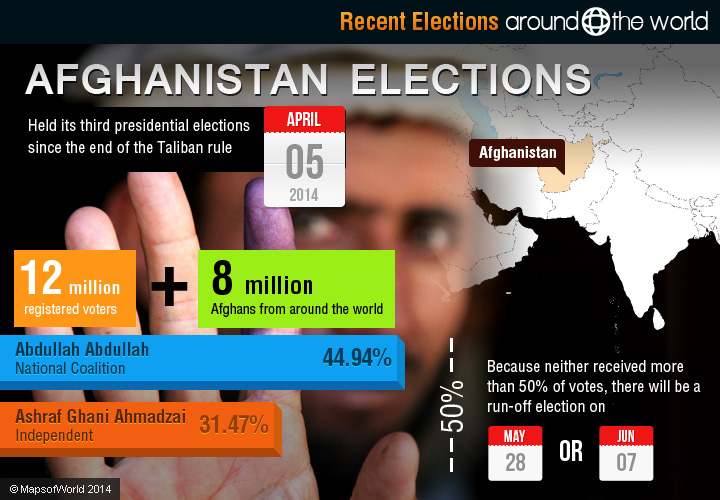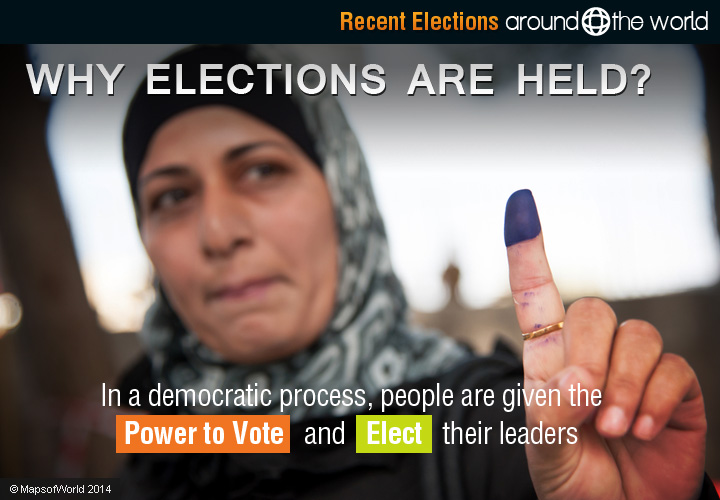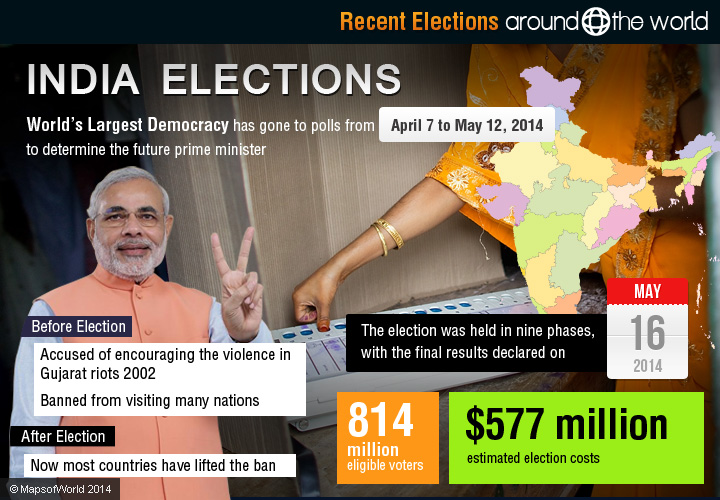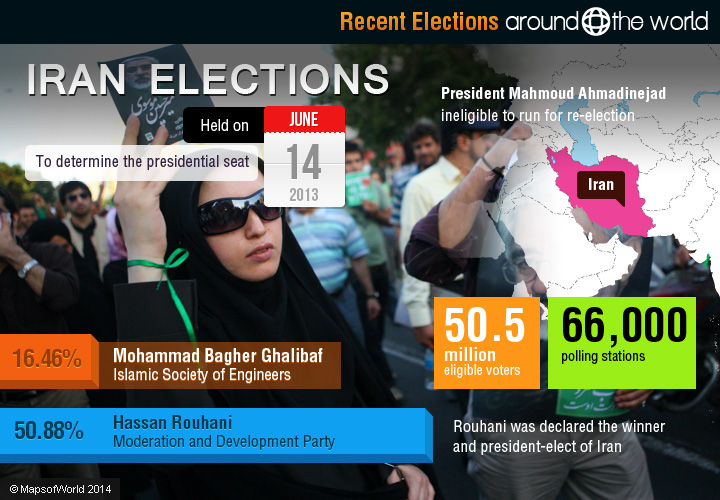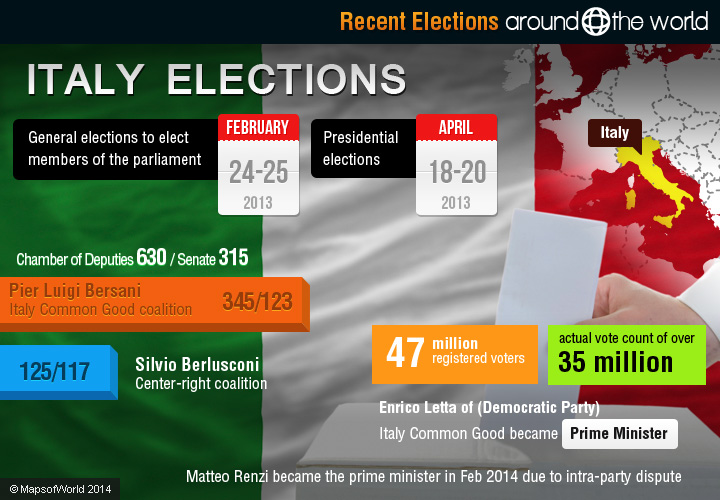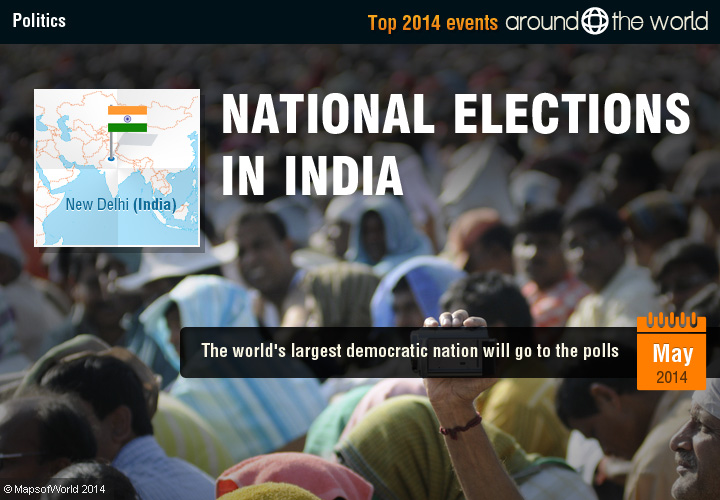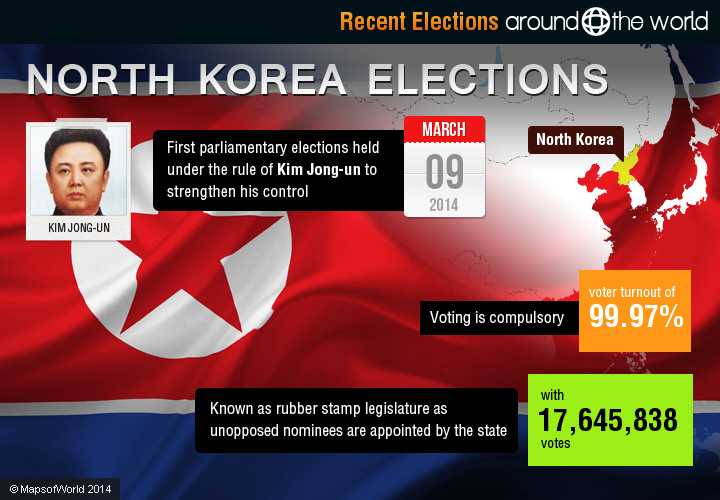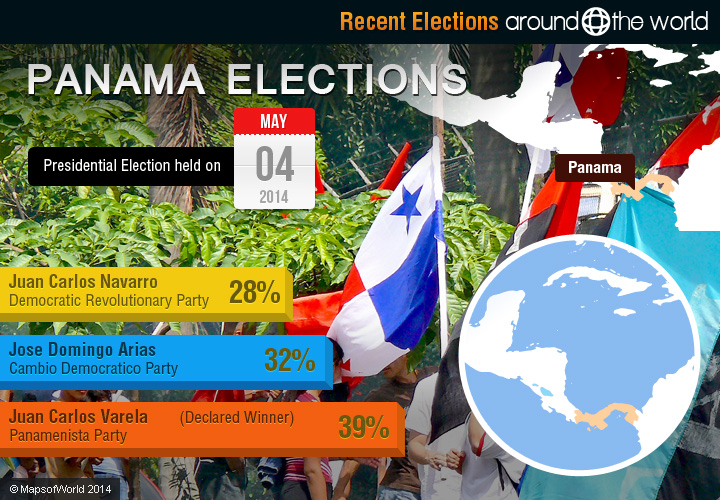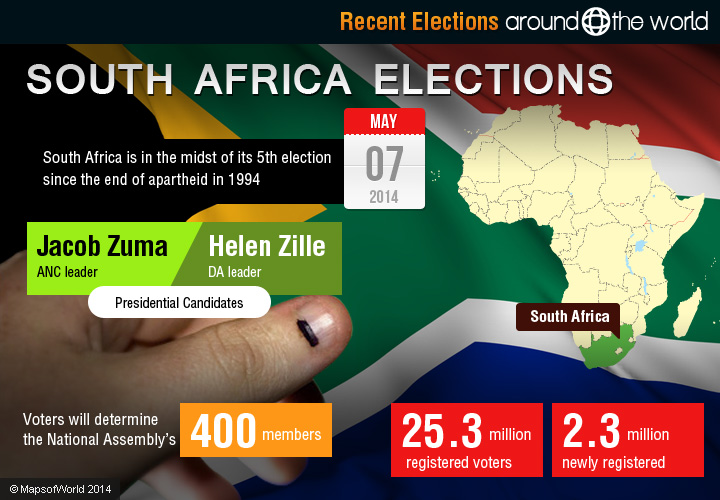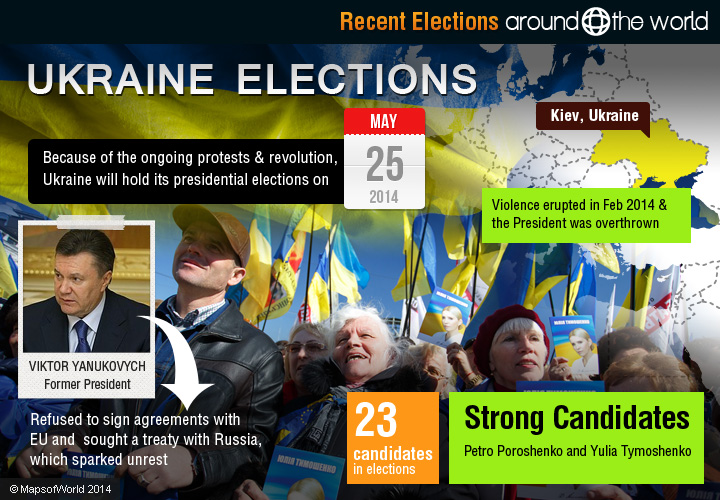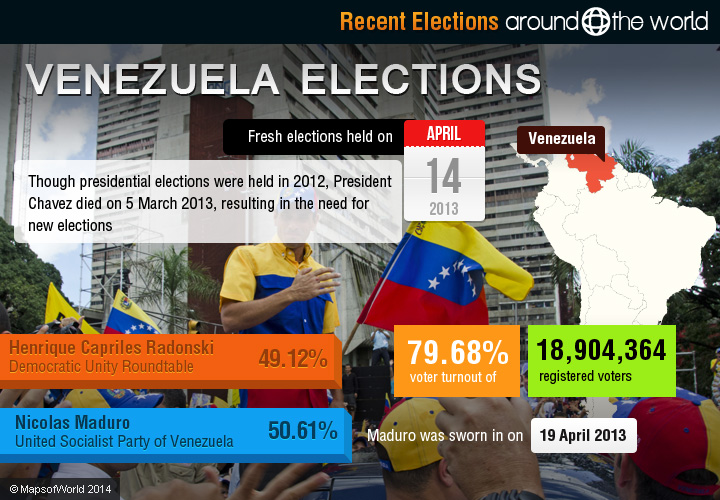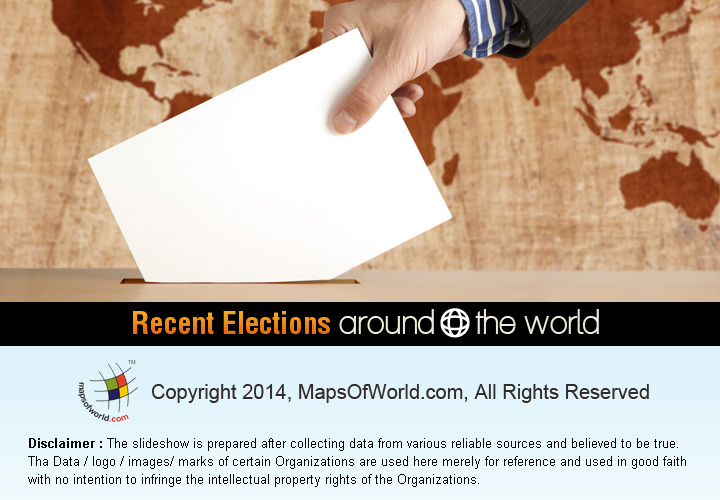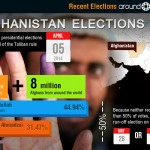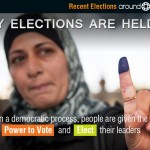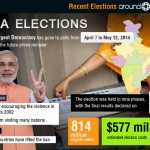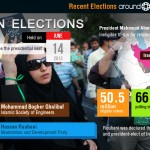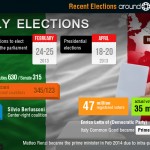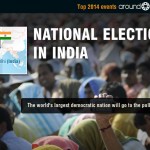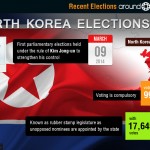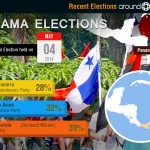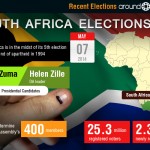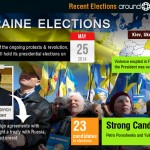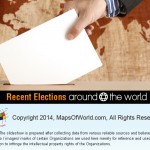Recent Elections Around the World
All around the world, citizens of the world’s democracies vote to elect their leaders, in order to best guide their nations to success. The democratic process has many forms and aspects, from direct elections to representative elections, with prime ministers and presidents, parliament and congress. While democracy is often seen as the best form of government, it is also one of the most difficult forms of government to maintain.
When leaders are overthrown for improper representation of the people, when they meet untimely deaths, gain too much power, and become tyrants, or suddenly resign, democratic elections can be compromised or become more complicated than ever. Despite the challenges that elections can present, the voices of the people must be heard and countries everywhere will continue to select their government in the hope of making best decisions for one’s own country. Here is a look at some of the recent elections around the world.
Ukraine 2014
Because of the ongoing Ukrainian revolution, Ukraine will hold its presidential elections on 25 May 2014, a year earlier than the scheduled 2015 elections. Violence erupted in political protests in Kiev in February, resulting in the overthrow of Ukrainian President Viktor Yanukovych, caused by government corruption and poverty among the people. The president refused to sign agreements with the EU and instead Yanukovych sought a treaty with Russia, which sparked unrest. Yanukovych left Ukraine, and the country has been under an interim government ever since. To speed up the new leadership process, Ukraine is holding its elections now.
There are 23 candidates in the Ukrainian presidential election, 18 of which previously ran in 2010, and 16 of which nominated themselves. Because there are so many candidates, there is a rule in Ukraine that states that a candidate must garner a majority of votes in the first round or the top two nominees then will compete in a run-off election.
Polling has seen a strong showing between the independent candidates: Petro Poroshenko and Yulia Tymoshenko of the Batkivshchyna (All-Ukrainian Union Fatherland) Party. Tymoshenko has previously served as the first female Prime Minister of Ukraine after the Orange Revolution in 2005 and from 2007 to 2010, and lost to Yanukovych in 2010. With tensions increasing in the region, it will be more essential than ever to establish a stable leadership in Ukraine.
Indian Elections
The general elections in India were held from April 7 to May 12, 2014, to determine the future prime minister of India. The elections were the largest democratic elections the world has ever seen with a record of 814 million eligible voters. Election costs were estimated at $577 million (USD) for the exchequer, and an additional $5 billion (USD) for each of the political parties.
With the now-resigned, Prime Minister Manmohan Singh choosing not to run for re-election, the 2014 elections was a face-off between Indian National Congress nominee Rahul Gandhi, and the Bharatiya Janata Party candidate Narendra Modi. Narendra Modi and the Bharatiya Janata Party ultimately achieved a landslide victory with a stupendous margin.
For these elections, Modi campaigned on the promise of change, development, and the end of corruption, focusing on the younger demographic. Earlier, Modi was accused of not stopping and even encouraging the violence between religious factions in the 2002 riots in his state of Gujarat, and was banned from visiting many nations, including the US and many European nations for a decade. Now most countries have lifted the ban, also on lines of making way for diplomatic immunity for the PM-elect. On the other hand, the Indian National Congress is one of the major and the largest political parties in the world that operates democratically. The party has proved its mettle since the time of Independence and has appealed to the rural population by providing social services.
The election was held in nine phases, with the final results declared on May 16.
South Africa 2014
South Africa is in the midst of its 5th elections since the end of apartheid in 1994, with the 7 May 2014 general elections. Voters will determine the National Assembly of South Africa’s 400 members, who will then decide the presidential seat. Of South Africa’s 400 National Assembly seats, half will be selected from national party lists and the other half from provincial party lists.
There are several major political parties in South Africa, including, the current governing power: African National Congress and its main opposition, the Democratic Alliance. Other significant parties, include, Congress of the People, Inkatha Freedom, and the Economic Freedom Fighters. There are several new parties running for seats, including, the Ubuntu Party, the National Freedom Party, and the Workers and Socialist Party, among others. Early polling has shown the ANC with a majority of support by a wide margin, followed by the DA. The ANC leader who would become president is Jacob Zuma, while DA leader is Helen Zille.
There were 25.3 million registered voters, about 2.3 million of which were newly registered. The 2014 election has marked the first generation of eligible “born-free” voters, who were born post-apartheid.
Panama 2014
The general elections of Panama was held on 4 May 2014, designating a new president of the country. The Panamanian election had seven presidential candidates: Jose Domingo Arias (Cambio Democratico Party), Juan Carlos Navarro (Democratic Revolutionary Party), Juan Carlos Varela (Panamenista Party), Genaro Lopez (Broad Front of Democracy), Juan Jovane, Esteban Rodriguez, and Gerardo Barroso, each Independent. The incumbent, President Ricardo Martinelli was not eligible for the re-election.
Pre-election polls saw close competition, with Jose Domingo Arias ahead by most accounts and Juan Carlos Navarro trailing, with Juan Carlos Varela, who had served as a vice president for the incumbent president, not far behind. Varela had been ousted from his seat for speaking out against government corruption, including, taking bribes.
After the general elections, the commission declared Varela the winner with 39% of the votes. Arias received about 32% of the votes and Navarro earned 28%, with about ¾ of votes counted.
Afghanistan 2014
Afghanistan held its third presidential elections since the end of the Taliban rule on 5 April 2014. The elections marked the first peaceful democratic transfer of power in the country’s history. The incumbent, Hamid Karzai, had been the president of Afghanistan since the Taliban fell. Karzai was first appointed by the national assembly as the interim president, and went on to win the 2004 and 2009 elections.
During the nomination period for the 2014 elections, 27 candidates emerged for the presidential seat, but 16 of them were disqualified and three dropped out of the race. The remaining 8 candidates were: Abdullah Abdullah (National Coalition), Ashraf Ghani Ahmadzai (Independent), Zalmai Rassoul (Independent), Abdul Rasul Sayyaf (Islamic Dawa), Gul Agha Sherzai (Independent), Qutbuddin Hilal (Independent), Mohammad Daud Sultanzoy (Independent), and Hidayat Amin Arsala (Independent). The candidates were engaged in a series of three debates, discussing major issues like corruption and the economy.
Before the election, presidential polls predicted that the race would be a battle between National Coalition candidate Abdullah Abdullah and Independent Ashraf Ghani Ahmadzai. There were 12 million citizens registered to vote and an additional 8 million Afghans from around the world. Young voters were an essential demographic in the Afghan election, with about 2/3 of all eligible voters under 25 years of age. The election results showed Abdullah Abdullah winning 44.94% of the votes, and his nearest competitor, Ashraf Ghani Ahmadzai garnering 31.47%. Because neither received more than 50% of votes, there will be a run-off election on 28 May or 7 June.
Challenges for the new president will include preventing the Taliban from taking power with the loss of foreign troops, though Karzai may be able to work out a security deal with the US.
North Korea
Voting is compulsory in North Korea. On 9 March 2014, North Korea held parliamentary elections, which were the first under the rule of Kim Jong-un. These parliamentary elections held every 5 years were last conducted under the leadership of his father, Kim Jong-il and saw unopposed candidates from each district, each candidate winning 100% of the votes, and 99.98% turnout..
The people elect the Supreme People’s Assembly, which is the country’s legislature, though the nominees were appointed by the state without any opposition and is known as a rubber-stamp legislature. The election will effectively give Kim Jong-un the opportunity to create a parliament of his own, strengthening his control over the country. The 2014 election saw a voter turnout of 99.97%, with 17,645,838 votes, 100% of which were cast for the Democratic Front for the Reunification of the Fatherland, which includes several parties: Workers’ Party of Korea, the Korean Social Democratic Party, and the Chondoist Chongu Party.
The election does not meet the standards for democratic election by most accounts as it gives a chance to the authorities of North Korea to keep a check of the political fidelity of the citizens and to mobilize them. Also, it is a way for foreign observers to check for the signs of dissent.
Iran 2013
Iran held general elections to determine the presidential seat on 14 June 14 2013. The candidates were narrowed from 680 down to 8, with the incumbent, President Mahmoud Ahmadinejad ineligible to run for re-election. Presidential nominees, included, Hassan Rouhani (Moderation and Development Party), Mohammad Bagher Ghalibaf (Islamic Society of Engineers), Mohammad Gharazi (Independent), Sareed Jalili (Front of Islamic Revolution Stability), Mohsen Rezaee (Development and Justice Party), and Ali Akbar Velayati (Islamic Coalition Party). Presidential debates were held from 25 May to 12 June, discussing and debating major campaign points. Pre-election polls showed Rouhani and Ghalibaf ahead by wide margins. Almost 50.5 million voters were eligible to vote in Iran’s elections, with 66,000 polling stations in Iran and 285 stations around the world for expats. Turnout was measured at 72.7%. With 18,692,500 votes and 50.88% of the total votes, Rouhani was declared the winner and president-elect of Iran. Ghalibaf came at a distant second with 16.46% of the votes.
Venezuela 2013
The Venezuelan presidential elections were held 14 April 2013. Though Venezuela held presidential elections in 2012, and re-elected Hugo Chavez for his fourth term as president, Chavez died on 5 March 2013, resulting in the need for new elections. Interim president, Nicolas Madura battled against Henrique Capriles Radonski for the leadership title. Radonski was a contender for the 2012 elections, which were still fresh in everyone’s minds, in which he lost by 11 points. Nicolas Maduro represented the United Socialist Party of Venezuela, while Radonski was the head of the Democratic Unity Roundtable. Other nominees included Reina Sequera, Maria Bolivar, Eusebio Mendez, and Julio Mora. The campaign rested on important issues including economic struggles and Venezuela’s high murder rate with Maduro following the footsteps of his predecessor on most issues. Polls showed Maduro ahead of Radonski by a wide margin shortly before the elections day.
When the votes were tallied, Maduro emerged victorious with 50.61% of the vote, while Radonski fell just behind with 49.12%. Because of the extremely close race, Radonski found it difficult accepting his loss, requesting an audit, but no errors were found. There was a voter turnout of 79.68% with a total of about 18,904,364 registered voters. Maduro was sworn in on 19 April 2013.
Italy 2013
In 2013, Italy held its general elections from February 24-25 to elect members of the parliament and presidential elections were held from April 18 to 20. In 2011, Italian Prime Minister Silvio Berlusconi stepped down from his role in the midst of the economic chaos and was replaced with Mario Monti. Monti resigned from the position in December 2012, after Berlusconi declared that he wished to return to the role. Italian President Giorgio Napolitano dissolved parliament, and new elections were required to determine the new leadership.
Major leaders in the 2013 elections were Pier Luigi Bersani of the Italy Common Good coalition and Silvio Berlusconi of the Center-right coalition. There were almost 47 million registered voters with an actual vote count of over 35 million, for a low turnout of about 75%, the lowest since the republic was formed. In the Chamber of Deputies and the Senate, the Italy Common Good coalition won 345 seats/123 seats (C/S), while the Center-right coalition earned 125/117. Other seats went to Beppe Grillo’s Five Star Movement coalition (109 seats in the Chamber/54 in the Senate), Monti for Italy coalition (47 seats in the Chamber/19 in the Senate), and additional seats to expats and semi-autonomous regions.
In February 2014, Matteo Renzi became the new prime minister after ousting his party colleague Enrico Letta (Democratic Party belonging to the Italy Common Good coalition), who had led Italy for just 10 months since the 2013 elections.
Renzi took the oath from President Giorgio Napolitano.
Read More
Who will be the next U.S. President?
New Hampshire results give momentum to US Presidential polls
US Presidential Election 2016 Facts
Survival of fittest: US presidential campaign 2016



